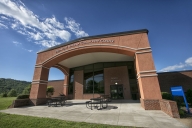You have /5 articles left.
Sign up for a free account or log in.
As the nation debates what could have been done to prevent the deadly rampage allegedly carried out by Jared Lee Loughner in Tuscon, some have questioned whether Pima Community College did enough to prevent the tragedy. The college suspended Loughner, and sources in The New York Times went so far as to suggest that Pima officials may have actually driven Loughner off the edge by suspending him until he sought a clearance from a mental health professional. Others have faulted the college for not following up with Loughner or his parents to ensure he wasn’t posing a threat outside the campus.
But many community college leaders watching the debate say there has been little understanding of the limits on how they can deal with such students -- and many feel that the debate ignores the realities that community college students don't live on campus, aren't necessarily taking more than a single course, may well be people with challenging and messy lives, and are much less likely than students at residential colleges to even consider their college a source of any kind of health care.
Many community college officials said that Pima's systems appear to be standard for comparable institutions: a few counselors, a system for reporting strange or disturbing behavior, and an assessment team that advises administrators and intervenes in student cases when necessary. The question, as Dean Dad wrote Friday on his Inside Higher Ed blog, Confessions of a Community College Dean, is knowing when someone poses a serious threat. “If you only look at one case, and have the benefit of hindsight, it’s easy to see the ‘right’ answer,” Dean Dad writes. “But if you look across a campus with a cast of thousands, and new faces every few months, you can’t help but notice that the usual ‘profiles’ would turn up an absurd number of false positives.”
Take the Community College of Baltimore County. Last year, the college suspended a student veteran of the Iraq War who had published an essay about the thrill he got from killing enemy soldiers, describing it as a “drug.” Administrators told Charles Whittington that he could not return to campus until he provided documentation of a psychological evaluation. Whittington quietly left the school for good this month; some said the college was unfair and overreacted to the essay.
Caroline Scott, dean of college life at CCBC, defended that institution’s handling of Whittington and added that Pima handled Loughner appropriately. “It’s always very, very difficult because you want to be careful about the way you proceed with a student, because you really are interested in their well-being – and also the institution’s,” Scott said. “You don’t want to make a decision where you don’t make a request and then have them come back to the campus the next day and do harm.”
Without resident assistants and other close-quarter relationships that make residential colleges better equipped to keep an eye on students and notice odd behavioral changes, community colleges’ inability to thoroughly monitor and assess tens of thousands of students is only one obstacle. When there is something wrong, it’s not as simple for a student to get the necessary help on campus. Community colleges do not tend to have the full range of student services that one finds on residential four-year campuses -- both because states don't finance such services for community colleges and because many students, as working adults, look elsewhere for health care, including mental health care. Community colleges are more likely to have limits on counseling sessions, and the counselors may work fewer hours because of the come-and-go nature of commuter campuses.
“The expectation placed on you when you work at a small residential college is, basically, you need to be there 24/7 for that student,” said Marcus Hotaling, director of the counseling center at Union College, a residential four-year college in New York. “Ultimately the college in Arizona did everything it could have done. They asked the student to leave the campus and they asked the parents to get a mental health consult.”
Norma Kent, spokeswoman for the American Association of Community Colleges, said the organization’s latest survey found that while all community colleges offer services comprising academic and behavioral counseling, those with psychologists on staff are in the minority. Rather, the colleges are more likely to refer students to off-campus health professionals. The number of counseling personnel typically ranges from one to 13, Kent said (though few institutions are on the high end of that range).
“Do we have a mental health clinic at our campus? No,” said the Pima spokesman Paul Schwalbach, again emphasizing that students don’t attend commuter campuses for such services. “The college believes that it did all it could…. We did what we needed to do to keep our students and employees safe.” With nearly 70,000 students, Pima is the eighth-biggest community college in the country, Schwalbach said, giving officials a “gigantic” responsibility to fulfill.
After students and faculty members reported incidents of Loughner's disturbing behavior, campus police confronted the student multiple times. Loughner also sat down for visits and consults with Pima administrators and counselors, and the college was tracking his behavior leading up to the Sept. 29 suspension.
As was the case after the massacre that ended with 32 people dead and 20 injured at Virginia Tech University in 2007, Loughner’s spree has gotten colleges talking about what they can or should be doing differently. After Virginia Tech, many colleges -- including Pima -- revamped their emergency procedures or created behavioral assessment teams. The same thing is sure to happen this time, said G. Jeremiah Ryan, president of Bergen Community College.
“Hopefully, you learn and you revise and you make your reactions better in the future for people,” Ryan said.
Bergen, like other community colleges, has found ways to deal with “lots of people and no money,” he said. Bergen’s “one-stop wellness center” has two full-time counselors, a medical professional and a full-time faculty member. Student referrals can go to the regional hospital. “Whenever you have a student that demonstrates aberrant behavior, the biggest thing you can do is make sure you have a well-trained faculty” who feel comfortable referring students off-campus, Ryan said. “We like to try to give people a chance, and Pima certainly demonstrated that….
"But in the end, and we’ve had this happen ... if you’ve got somebody that is just not going to engage in an acceptable way, then you’ve got to separate them from the institution.”








